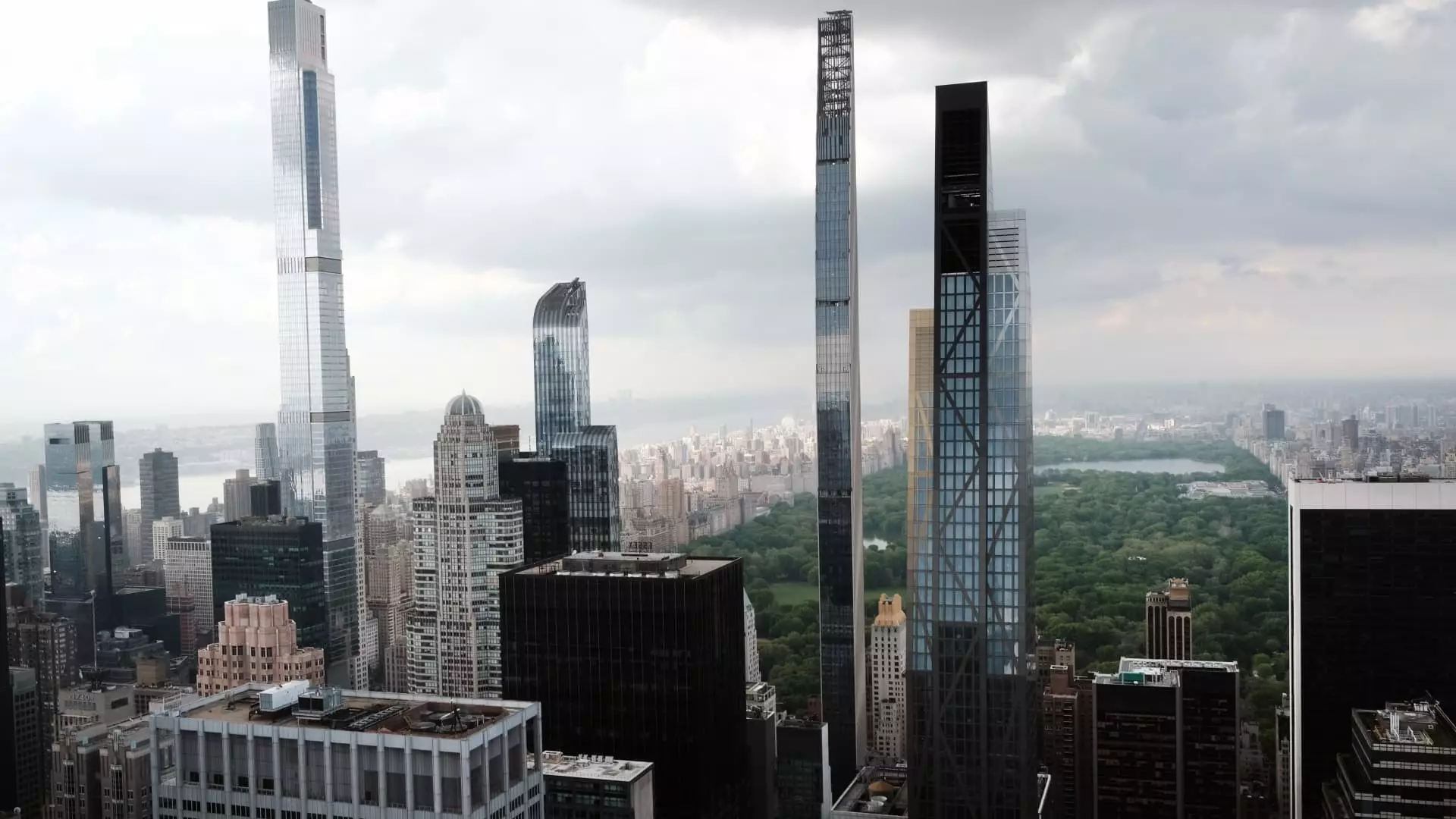The first quarter of 2023 saw an impressive 29% spike in Manhattan apartment sales compared to the previous year, signifying a remarkable shift in the real estate landscape. While many sectors across the economy have experienced severe fluctuations due to ongoing economic uncertainties—rising inflation and interest rates, in particular—Manhattan’s luxury real estate market appears unwavering. With affluent buyers gravitating towards solid investments, the high-end property market has become a refuge from tumultuous stock fluctuations, centered around a burgeoning appeal for tangible assets.
Indeed, according to reports from real estate valuation expert Miller Samuel and brokerage giant Douglas Elliman, Manhattan recorded 2,560 closed sales this quarter. This welcome growth translates to significant value—$5.7 billion in sales which marks a staggering 56% increase year-over-year, primarily driven by luxury properties. It’s worth noting that the real estate space is often seen as a safety net; as stock trading continues to fluctuate, aspiring buyers pivot towards the durable nature of real estate. Nonetheless, one has to ask: why should we celebrate this trend that seemsly benefits the ultra-wealthy at the expense of the broader population?
The Cash-Driven Boom
The data reveals a striking preference for cash transactions in the market: 58% of properties sold this quarter were bought outright, bypassing the constraints of mortgage dealings altogether. More affluent buyers tend to utilize existing wealth rather than taking out loans, particularly for homes valued above $3 million, where cash purchases represented an eye-catching 90% of sales. This starkly contrasts with the lesser-performing segments of the market, primarily affecting those investing in more affordable housing options. Here we see a troubling disparity emerging that underscores the economic divide plaguing our society.
The so-called “mid-market” properties—those priced between $1 million and $3 million—showed a 10% decline in signed contracts, while properties priced between $500,000 and $1 million experienced relatively better performance. Can we genuinely cheer for the rise of the luxury market without acknowledging the plight of those seeking affordable housing? This inequity raises an important moral dilemma within the real estate discourse.
Re-emergence of Affluent Buyers
Emerging from the pandemic era, the “boomerang wealthy” phenomenon is contributing significantly to the resurgence of real estate deals in Manhattan. Individuals who relocated to more cost-effective states like Florida during heightened COVID concerns are now returning, attracted by the comfort and opportunities that New York City offers. Such market dynamics reflect not just a trend but a lifestyle choice made by the elite. Once again, we are reminded that economic policies tend to favor those with existing capital, leaving less affluent classes to grapple with increasing living costs and dwindling opportunities.
Moreover, the generational transfer of wealth—the so-called “great wealth transfer” from baby boomers to their progeny—has led to a tightening grip on the luxury real estate market. As family trusts manage this influx, young adults with newfound riches are entering the market, often purchasing with cash. This is not just changing the landscape but may solidify a culture of property ownership among the wealthy, solidifying their status even further while sidelining those outside this affluent bubble.
Implications for the Future
Despite the apparent dynamism in the luxury segment, we must analyze the trends with a keen eye on sustainability. The current market, invigorated by cash-heavy transactions, is somewhat decoupled from the broader economic performance, especially the stock market. Jonathan Miller, CEO of Miller Samuel, cautions that while first-quarter numbers are encouraging, the lurking uncertainties could yet temper future performance.
Moreover, signs of slowing activity in the first quarter of 2024 indicate a potential softening on the horizon. Buyers and investors should maintain vigilance, discerning whether the current boom reflects a long-term trend or merely a fleeting moment of exuberance. Housing, after all, is not merely a commodity; it represents a cornerstone of economic stability for countless families.
As luxury real estate continues to thrive even amidst economic adversities, it invokes a spectrum of feelings—pride for its resilience yet concern for the chasm it might deepen between varying economic classes. While Manhattan celebrates its soaring sales, it is vital to reflect on the broader implications of this success story, one that could forget the everyday aspirations of many who dwell within its shadows.

